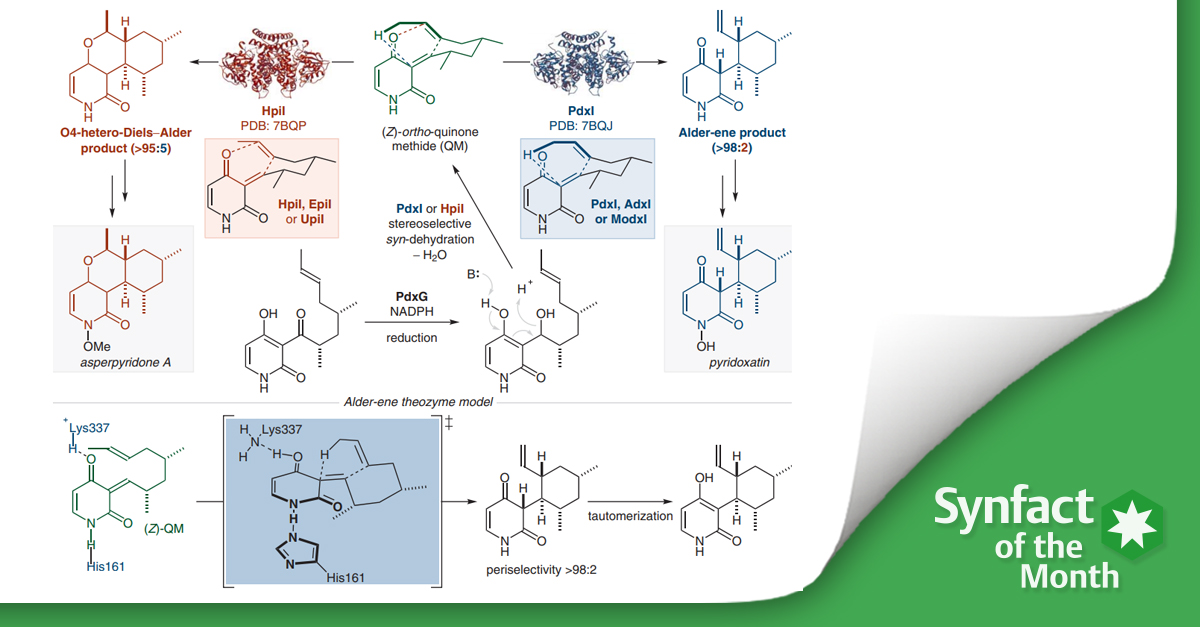
Organo- and Biocatalysis
Identification of the First Enzyme-Catalyzed Alder–Ene Reaction
Contributors: Benjamin List, Mathias Turberg
Ohashi M, Jamieson CS, Cai Y, Tan D, Kanayama D, Tang M.-C, Anthony SM, Chari JV, Barber JS, Picazo E, Kakule TB, Cao S, Garg NK, Zhou J, *, Houk KN, *, Tang Y. * Shenzhen Institutes of Advanced Technology and Shanghai Insitute of Organic Chemistry, P. R. of China; University of California, Los Angeles, USA
Nature 2020;
586: 64-69
DOI: 10.1038/s41586-020-2743-5.
Key words
Alder–ene reaction - hetero Diels–Alder reaction - periselective pericyclase

Significance
The groups of Zhou, Houk, and Tang report the discovery of an enzymatic Alder–ene reaction, involved in the biosynthesis of the leporin 2-pyridone alkaloids pyridoxatin and cordypyridone. The predicted SAM-independent O-methyltransferase-fold (OMT-fold) enzymes AdxI, EpiI, PdxI, ModxI, UpiI, and HpiI were identified as pericyclase enzymes that catalyze the stereoselective dehydration of the alcohol substrate to a (Z)-quinone methide and its subsequent pericyclic transformations. The origin of periselectivity was unraveled by a combination of computational studies, crystallography, and site-directed mutagenesis.
Comment
The authors expanded the array of known pericyclase enzymes by identifying two homologous groups of enzymes that catalyze the same stereoselective syn-dehydration of a pyridone alcohol substrate, but with divergent periselectivity. Crystal structure data of PdxI and computations suggest that a lysine residue acts as general acid catalyst to favor the Alder–ene over the hetero-Diels–Alder pathway. In HpiI, a valine residue in the active site is substituted by a methionine residue that prevents this key interaction thus selectively providing the O4-hetero-Diels–Alder product.
阅读更多论文,请点击这里。
